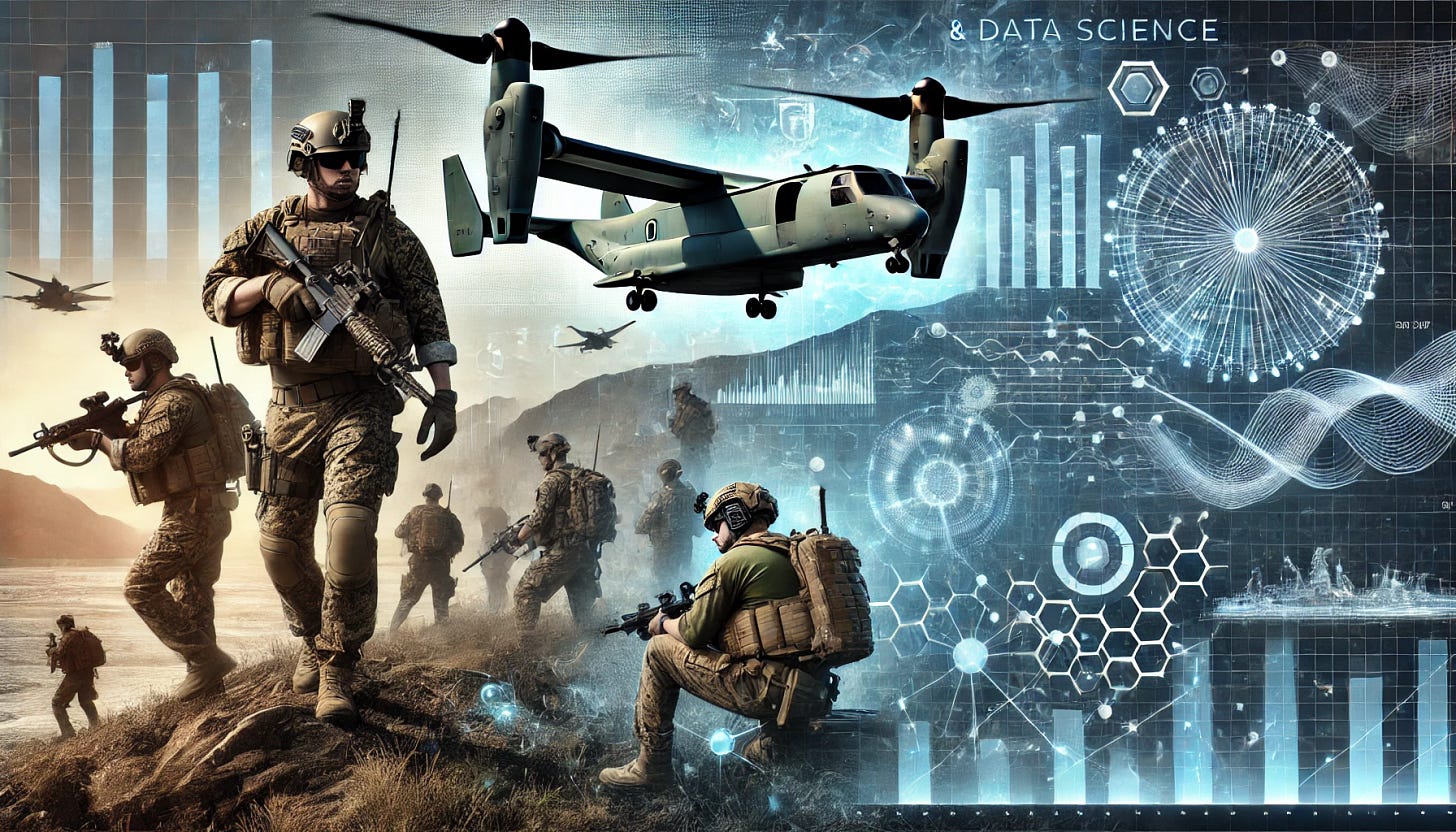Saved Rounds: Artificial Intelligence and the Infantry
Articles, resources, and responses for your weekend coffee

Editor’s Note:
Today’s Saved Rounds builds upon this week’s article: Data for Grunts, The 10,000-foot View of Artificial Intelligence, with additional readings and notes on the subject.
Call for Articles and Ideas
If you have been able to automate, devise software or code, or employ data science/AI to improve processes or decision making in your battalion or company, will you shoot us a note and tell us about it?
Have you employed Large Language Models (LLMs) or Generative AI as part of your tactical planning or OPORD development? If yes, can you share how it went?
Do you have a media source you regularly use to stay current or practically employ AI? Can you pass it along?
We exist to facilitate dialogue and amplify your voice. Put us to work.
Quantico Sends
Released in December, but lost during the dead weeks of the holidays, the Deputy Commandant for Information, Service Data Office released NAVMC 5239.1 to establish AI task forces at major units and provide guidance on the use of Generative AI.
In short, the NAVMC states:
“Commands will establish an AI Task Forces/Cells consisting of various data, knowledge management, AI and digital operations subject matter experts to assess existing and in-development GenAI offerings,” and “will generate a list of forthcoming preferred GenAI capabilities aligned with common use cases as a reference for USMC organizations seeking to apply GenAI solutions to their mission needs and, as applicable, endorsement.”
For a great summary and analysis of the document, as well as placing it in context of larger DoN and DoD policy, we recommend this article by Breaking Defense.
The question on our minds at the CxFile is: will there be a seat at the table for the lower echelons? Will the Task Forces take a proactive approach in relieving the administrative burdens, while finding ways to support unit readiness - and dare we say lethality - that impact the majority of their Marines?
That said - will junior leaders speak up and ask for a seat at the table? Got it, we’re busy leading, but think about the long-term pay off if it will result in with time gained back through potential automation. Bottom line: be the change you seek in the Marine Corps.
Adjacent Units
To continue learning more about data science and it’s relevant military application, we highly recommend these other resources.
War Quants, founded by a few Marine Grunts armed with advanced degrees, this Substack provides quantitative and data-driven insights at the nexus of national security, strategic competition, and defense tech/entrepreneurship. Check out their analysis on the combination of AI + the M240 as an effective CsUAS method.
Downrange Data, by Army SF Colonel, Erik Davis, seeks to spread the gospel of data literacy within the DoD. Most relevant to you are his initial 30 posts, which were geared towards helping the reader improve data literacy and how to apply data science to automate analog processes. If you really want to find ways to reduce your work flow, this is a great starting point. Written for the warfighter in mind, albeit of Army flavor, this is worth your time.
Bulletin Board
Bridging the Marine Corps’s Digital Chasm, by LtCol Scott Humr, PhD, Deputy Director for the Intelligent Robotics and Autonomous Systems Office, CDD. In his article for the Modern Warfare Institute, LtCol Humr makes the case that the Marine Corps must reform its approach to decision-making tools by embracing a data- and software-centric organization with a trained digital workforce. The purpose of this is to break the cycle of outdated IT practices and to enable tactical commanders to develop adaptive solutions using modern tools and real-time data. He argues that by embedding technical experts across units, we can create scalable and interoperable systems that enhance decision-making while mitigating inefficiencies and vulnerabilities.
Four Battlegrounds: Power in the Age of Artificial Intelligence. Paul Scharre, a former Green Beret and current Executive Vice President for the Center of New American Security, examines the evolving global competition driven by advancements in AI. He identifies four key topics: data, computing power, talent, and institutions and how nations vie for dominance in each category. Scharre also explores how AI's integration into military and societal systems reshapes geopolitics, highlighting risks like authoritarian misuse and ethical dilemmas. It is worth your time to help you better understand the terminology and relationships between hardware and software and build a comprehensive understanding of the topic. Scharre is also the author of Army of None: Autonomous Weapons and the Future of War.




Marines gonna use ChatGPT to fill out their ORM forms or leave requests or other meaningless administrative tasks